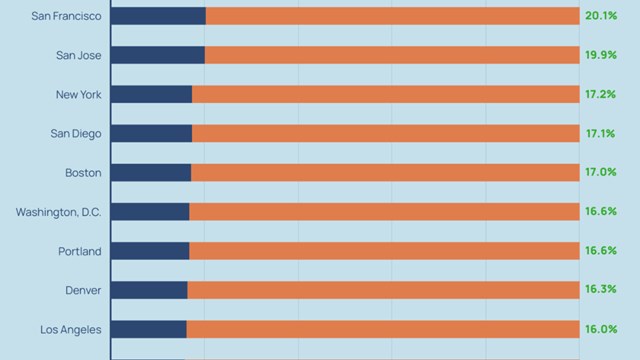With mortgages as common as they are today, most borrowers know the standard steps in securing a loan for a condo or co-op. In the simplest terms, a borrower must first pick a lending institution, be it a commercial bank or mortgage banker. After that comes the application process, during which requisite financial and employment information is provided to the lending institution. After approval, borrowers close on the loan. From here, the only thing most borrowers are concerned with is making their required monthly payments.
But what happens to that loan between the closing and the final payment? Does it stay in one place? Who actually funds it? Why is it often serviced by an organization different from the one that closed on it?
The process beyond the borrower/lender interface is invisible to borrowers but very important nonetheless. Practice varies from bank to bank and mortgage broker to mortgage broker, but the majority of lenders sell the mortgage loans they make and sell the servicing of the loans, though not necessarily to the same place. Lenders sell–or opt not to sell–based on what is most advantageous and lucrative for them.
A Loan’s Journey
Lenders are part of the primary mortgage market–the place where mortgages originate and funds are loaned directly to borrowers. Before the advent of Freddie Mac and Fannie Mae, lenders had two main options: They could hold onto mortgage loans and service them, or they could sell them to each other to balance their portfolios. There was no one universally recognized method for dealing with these loans.
Today, lenders can still hold on to the mortgage loans they make. When lenders retain loans, the loans are considered assets that are guaranteed by the steady income generated by the borrower’s monthly payments. This is the principle advantage in holding onto a loan.
Lenders may also sell their loans to other banks. When they sell loans instead of retaining them, they are selling them in the secondary market–the place where mortgages are bought and sold by various investors. Banks are secondary market investors. So are pension funds, insurance companies, securities dealers, Freddie Mac and Fannie Mae.
Most lenders opt to sell loans because they don’t have the capital to keep the loans on their books. Through selling their loans, lenders replenish their funds, which in turn, enables them to lend more money to more homebuyers. A lender usually pools a number of loans with similar characteristics–for example 100 thirty-year loans at seven percent interest–when it sells them. Or, as Freddie Mac puts it, "think of America’s mortgage lenders as retail stores where people go to buy mortgages, and the secondary market as the supplier."
Fannie Mae and Freddie Mac are a large part of the secondary mortgage market. In fact, Fannie Mae is the nation’s largest provider of funds for home mortgages. In 1999, Fannie Mae bought $887 million worth of share-loans in the New York metropolitan area. This is a 41 percent increase over 1998 and a 105 percent increase over 1997. More staggering is the 503 percent increase over 1994, when $147 million in loans were purchased.
"This is a huge increase, mainly because of the secondary market activity," says Terry Lewis, vice president of corporate development for National Cooperative Bank (NCB), which mainly makes loans to co-ops. "The performance of the loans is excellent, a less than one percent default rate." Rebecca Coder, vice president of marketing and communications at NCB concurs and points out that, "investors perceive mortgages to be sound investments."
Loans in the Secondary Market
Like many lenders, NCB sells its share loans–but the bank sells only to Fannie Mae. Other lenders, such as the New York Mortgage Company, LLC, have a different tack. They have ongoing relationships with a slew of different financial institutions like Citibank, Wells Fargo, and Dime. They sell mortgage loans to any one of the many institutional investors they’re in contact with, based on a matrix that matches borrowers with investors.
"When we issue a commitment letter," says Jason L. Madfus, vice president of settlement services for New York Mortgage Company, "we have an idea, 90 to 95 percent of the time, where we are going to be able to sell that loan on the secondary market." For example, through the matrix the company will know it can sell a $150,000 loan for a co-op at 71/4 percent to one of five different investors, all at the same cost to the borrower, he explains. Because New York Mortgage Company maintains ongoing relationships with the investors, it is able to sell one loan at a time, instead of pooling similar loans together before selling them, Madfus says. "One of the biggest changes in the mortgage industry in the past ten to 15 years has been the securitization of mortgages, the ability of lenders to sell loans in the market," he adds.
Fannie Mae and Freddie Mac’s work in the secondary market is two-fold. For one, it pays cash for mortgages it buys from lenders and holds them in its portfolio. It also issues Mortgage-Backed Securities in exchange for pools of mortgages from lenders. These securities are then traded on Wall Street through securities dealers. A mortgage can navigate through many different institutions-a state pension fund, a bond fund-before it is finally paid.
The Servicing Picture
While NCB sells its share loans, it does not sell the servicing of its loans. Instead, it services its loans itself because it feels it can offer superior customer care this way, according to Coder. On the other hand, New York Mortgage Company sells servicing to the investors who buy the loans. But service, which is simply the tracking and coordination of monthly principal and interest payments, can be sold to an entity that has nothing to do with the loan itself. For example, companies such as Midland Loan Services or Midwest Loan Services deal exclusively in servicing loans. When a borrower has questions about their loan, those questions are fielded and addressed by the entity servicing it.
"Servicing can be very lucrative," Madfus says, "but it is very man-power intensive." In turn, many lenders don’t have the personnel to handle servicing on their own loans, so they sell it, either to servicing companies or to other lenders that are set up to handle servicing. "It’s not uncommon for a borrower to get a letter from their primary lender saying ‘your loan has been sold to XYZ bank and your payments should be made to another bank,’" Madfus continues.
In the end, the vast majority of borrowers need really only concern themselves with sticking to their loan payments. What happens to their loan after closing is not their worry- unless, of course, they want to make a play or two on the Wall Street bond market.
Ms. Malek is a freelance writer living in Manhattan.







Leave a Comment